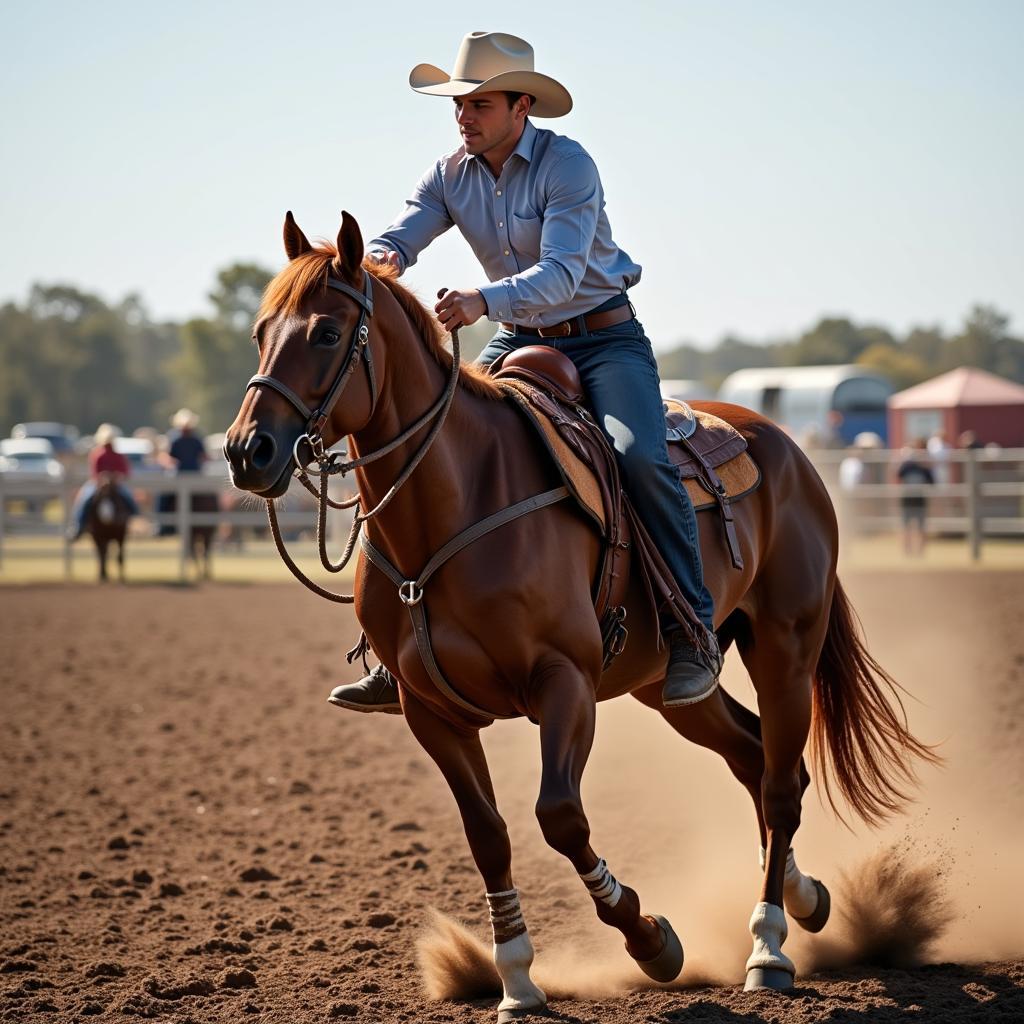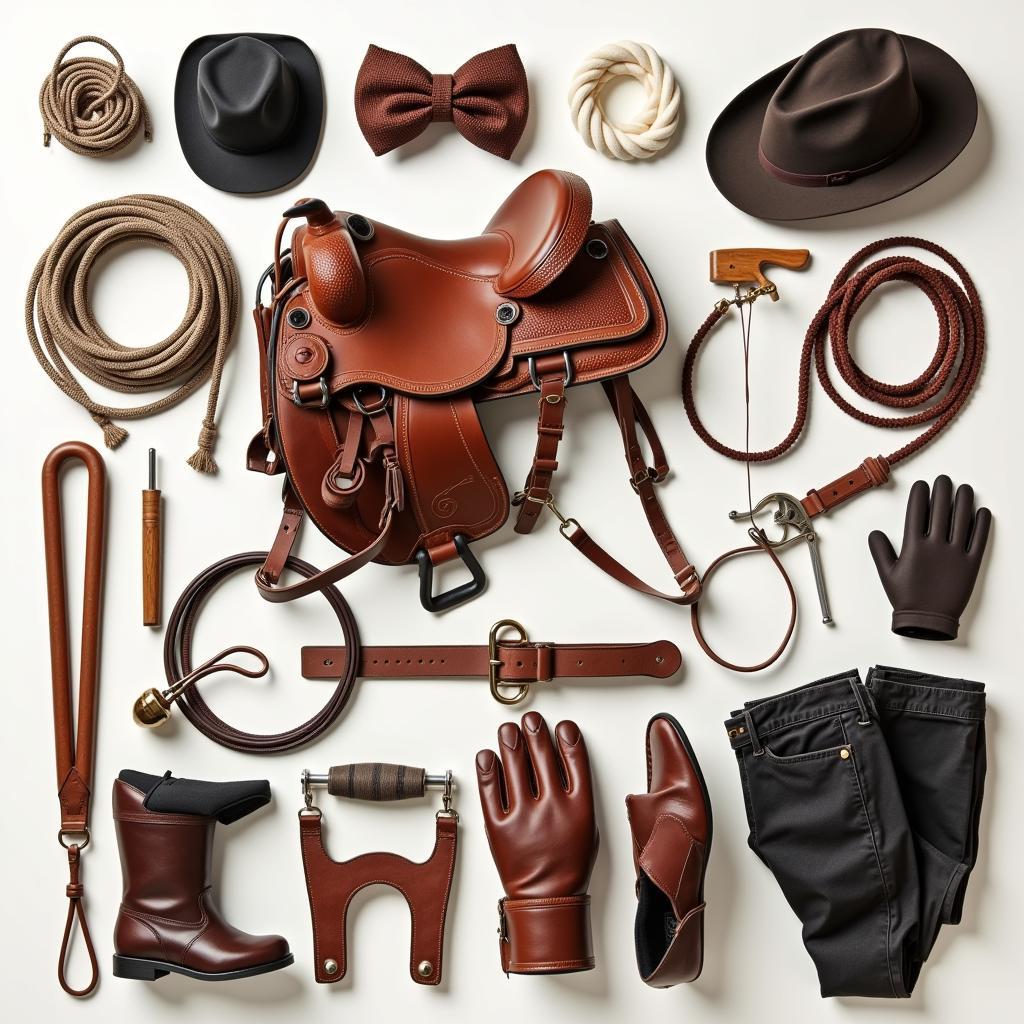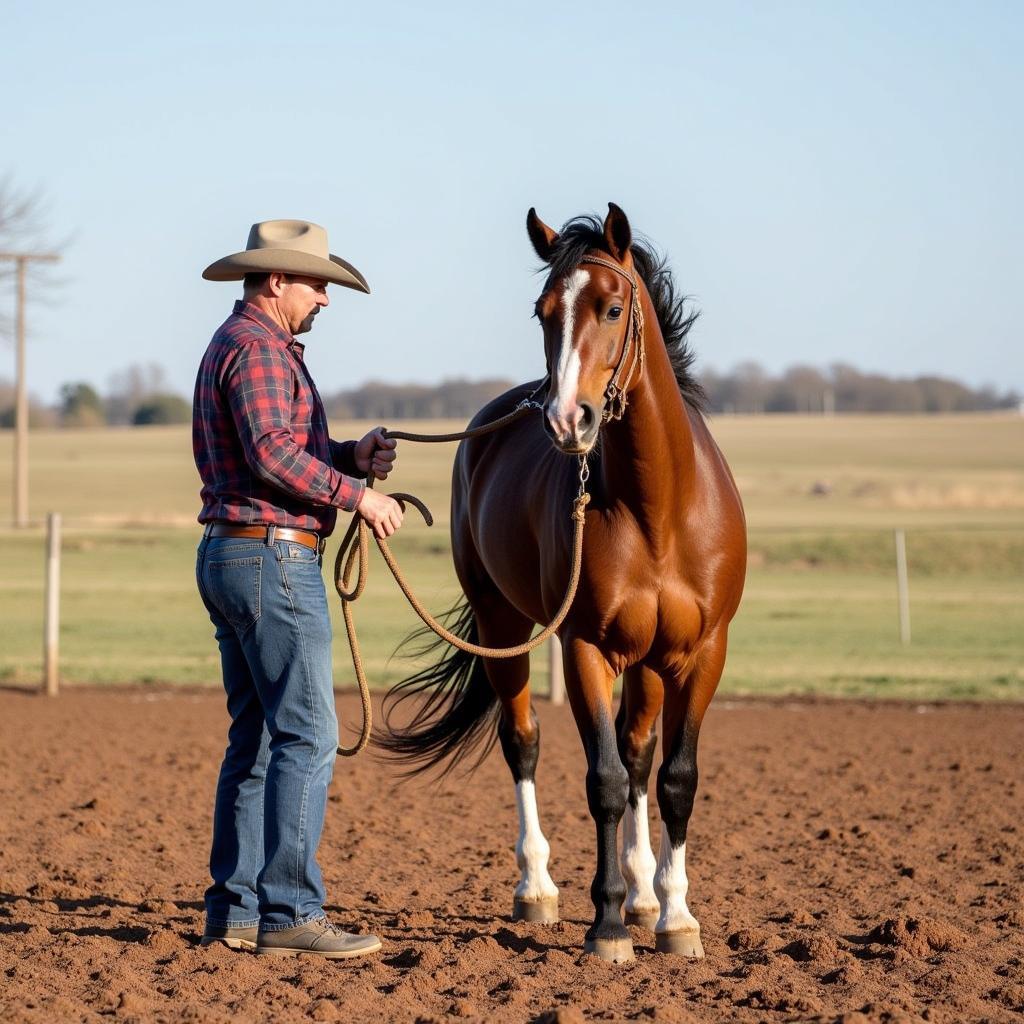Horses Roping, a captivating blend of skill, timing, and equine athleticism, has been an integral part of equestrian culture for centuries. From the working ranches of the American West to the electrifying atmosphere of rodeo arenas, this practice showcases a unique partnership between horse and rider. Whether you’re a seasoned roper or just starting out, understanding the intricacies of horses roping can deepen your appreciation for this time-honored tradition and enhance your own horsemanship journey.
 Horse and Rider Roping Technique
Horse and Rider Roping Technique
The Fundamentals of Horses Roping
At its core, horses roping involves capturing a calf using a lasso thrown from horseback. It requires a deep understanding of equine behavior, precise riding skills, and the ability to handle a rope with dexterity. The horse plays a crucial role, needing to be well-trained, agile, and responsive to the rider’s cues.
Essential Equipment for Horses Roping
Before delving into the techniques, it’s important to be familiar with the necessary equipment:
- Rope: Roping ropes are typically made of nylon or a blend of synthetic materials, chosen for their strength, flexibility, and resistance to fraying.
- Saddle: A specialized roping saddle is designed for stability and balance, featuring a deep seat and a sturdy horn for securing the rope.
- Protective Gear: Both horse and rider benefit from protective gear, such as leg wraps for the horse and gloves, hat, and vest for the rider.
 Essential Horse Roping Equipment
Essential Horse Roping Equipment
Disciplines Within Horses Roping
Horses roping encompasses various disciplines, each with its unique set of rules and challenges:
- Team Roping: A fast-paced event where two riders work together to rope a steer, with one roper catching the horns and the other securing the heels.
- Calf Roping: A timed event where a single rider ropes and restrains a calf.
- Breakaway Roping: Similar to calf roping but the rope is designed to break away when tension is applied, emphasizing speed and accuracy.
Selecting and Training Your Horses Roping Partner
Choosing the right horse for roping is crucial. Breeds like Quarter Horses and American Paint Horses are renowned for their agility, speed, and trainability, making them well-suited for the demands of roping. However, it’s not just about breed; temperament, athleticism, and a willingness to work are equally important.
Training a horses roping horse requires patience, consistency, and a solid understanding of equine psychology. Building trust and clear communication between horse and rider is paramount.
 Horses Roping Training Exercises
Horses Roping Training Exercises
Tips for Aspiring Ropers
- Seek Expert Guidance: Learning from experienced ropers is invaluable. Find a reputable trainer or mentor who can provide personalized instruction and feedback.
- Focus on Fundamentals: Master the basics of horsemanship, including riding position, balance, and control, before progressing to roping.
- Practice Regularly: Consistent practice is essential for developing timing, accuracy, and coordination.
- Build a Strong Bond: A trusting partnership between horse and rider is crucial for success in roping. Spend time bonding with your horse and understanding its cues.
Conclusion
Horses roping is more than just a sport; it’s an art form that celebrates the unique bond between humans and horses. It demands dedication, skill, and a deep respect for the animal athlete. Whether you aspire to compete or simply appreciate the beauty of this equestrian discipline, understanding the fundamentals of horses roping can enhance your horsemanship journey and deepen your connection with these magnificent creatures.
For those interested in exploring the world of horses roping further, we invite you to browse our selection of breakaway roping horses for sale and finished team roping horses for sale.
FAQ
-
What is the best age to start training a horse for roping?
While horses can start learning basic cues earlier, dedicated roping training typically begins around the age of two or three, when they are physically and mentally mature enough for the demands of the discipline. -
What are some common mistakes to avoid in horses roping?
Common mistakes include poor riding position, inconsistent cues, rushing the process, and neglecting to build a strong foundation of trust with the horse. -
Is horses roping dangerous?
Like any equestrian activity, horses roping involves inherent risks. However, with proper training, safety precautions, and responsible horsemanship, these risks can be minimized. -
What are some resources for finding horses roping events near me?
Online directories, local equestrian clubs, and breed associations are great resources for discovering roping events in your area. -
How can I learn more about horses roping?
Connect with experienced ropers, attend clinics, read books and articles, and watch videos to expand your knowledge and understanding of this fascinating equestrian discipline.
Looking for more information on horses? Check out our article on Are Mustangs Good Horses?
Need help choosing the right saddle? Our guide to Mexican Saddles for Horses can provide valuable insights.
For inquiries and assistance with all your equine needs, reach out to us at:
Phone Number: 0772127271
Email: [email protected]
Address: QGM2+WX2, Vị Trung, Vị Thuỷ, Hậu Giang, Việt Nam
Our dedicated customer support team is available 24/7 to assist you.